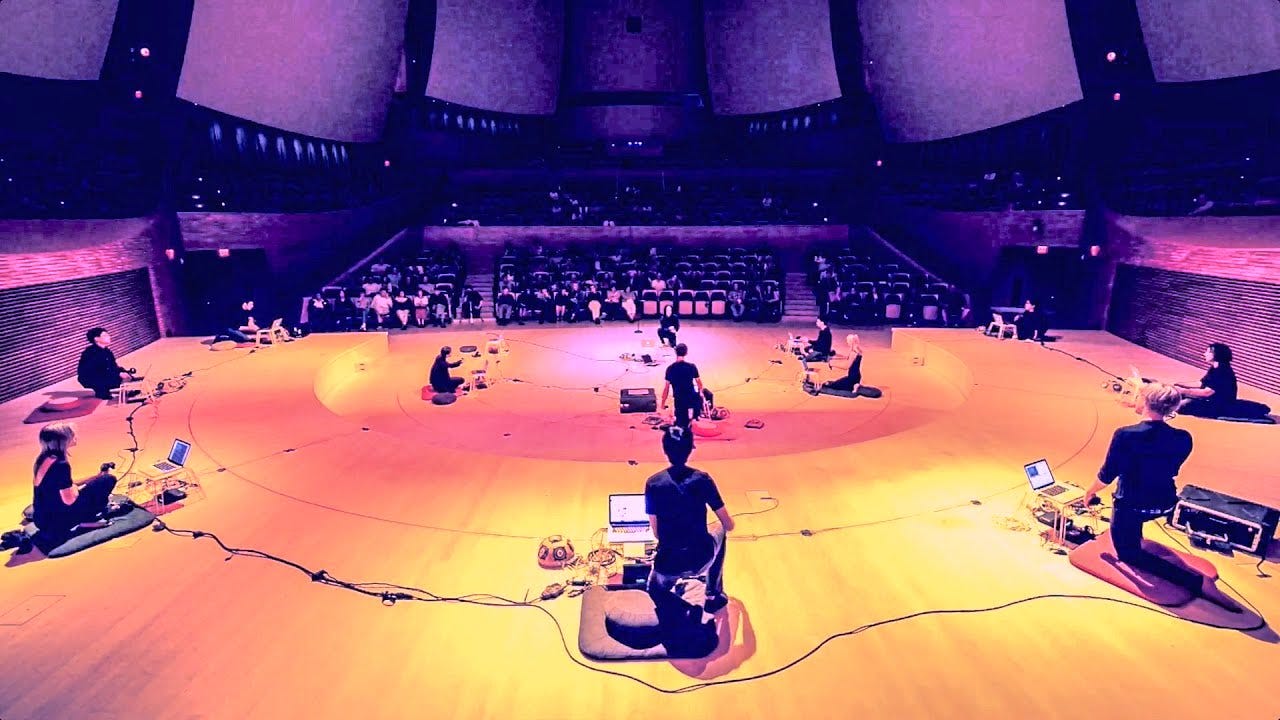Most of the biggest innovators and inventors stumbled upon solutions through following their thread of curiosity.

Without having an end goal in mind, that’s how penicillin was discovered from a petri dish of staphylococcus bacteria that had been inadvertently left out on the windowsill.
Pure curiosity and insistent prototyping is what led to the invention of electricity, the printing press, the transistor, the telephone, and the internet.
Along with curiosity that allows change-makers to ask the right questions, networking diverse ideas, fields, and perspectives is another important tool that is necessary to spur innovation.
Curiosity + Diversity = Innovation
These two ingredients, necessary in the innovation process, can be found in the practices of music and musicians that are intentional about driving change.
Something out of nothing
There’s nothing more intimidating than a blank piece of paper.
When you want to make or create something, the fact that you have to make something out of nothing can seem like one of the most daunting tasks.
I feel this fear every time I want to make a beat from scratch. Although with practice, I’ve found that this intimidation starts to reduce.
Constantly flexing that creative muscle and having the confidence to make something out of nothing is something musicians do all the time.
Despite blindness, Stevie Wonder and Ray Charles created music from a blank slate that moved the world.
In 1824, during the premiere of Ludwig van Beethoven’s “Symphony №9,” he had to be turned around to see the thunderous applause from the audience.
He could neither hear them nor the orchestra.
As one of the best composers and pianists of his era, Beethoven created some of his best work while he struggled from deafness. Through vibrations and raised eyelids, he also created something out of nothing.
Music makers use notes, rhythms, musical concepts, and technology to advance our understanding of the world.
These composers, instrumentalists, and melodic and rhythmic interpreters make a dent that brings forth the new in music and other fields.
Challenging convention
While in business school at Stanford, I would veer across campus to attend music classes or catch a show at the Center for Computer Research in Music and Acoustics (CCRMA) — pronounced ‘Karma’.
This expereience expanded my breadth of what I considered ‘Music’. I took two classes with Mark Applebaum, a professor of Music composition at Stanford University — referred to as the Mad Scientist of Music.
Catch his vibe in the video below:
I had the opportunity to interview Mark for my book — PRESS PLAY.
“How can music be used to raise social awareness?” I asked Mark after a brief catch up.
He answered, “So I make a tiny bit of music that comments directly on social events. It’s 1 percent of my whole music. The majority of my music is experimental, like ‘Aphasia.’ So that’s a piece that is so abstract, so experimental in its syntax and its vocabulary that it does not deliver any kind of clear socially conscious message like ‘Ohio’ by Crosby, Stills, and Nash, does about a specific event.”
“But what Aphasia is,” Mark continued, “ — and it’s part of the 99 percent of what I do — is that it is a work that aspires to be a model for freedom of expression. So my work as an artist…is to make, collectively, a statement that we can explore, we can make, we can play, we can be playful, we can experiment in a way that is not limited to a tradition, or a convention. It can break outside of it, and that people are free. And that it’s a natural birthright to be artistically expressive, if you want to be. And so that is a kind of statement of liberty. In that regard, that’s where I connect to the idea of music used as a socially conscious message.”
Mark’s work is meant to inspire and spark a freedom to express and experiment. Using music as a means to break away from the standard convention and tradition.
It allows us to explore our curiosity, feedung the innovative gene within all of us.
Bringing diverse group of people together
These musical play-promoters also arm us with the capacity to embrace diversity.
With their skills in emoting, they allow us to connect with a wide range of ideas, emotions, and people. Similar to how music producers such as Pharrell, Rick Rubin, and Brain Eno bring diverse groups together for spontaneous opportunities to network minds.
Jason Mayden is a product innovator and designer.
He was the lead designer for the Jordan Brand at Nike and CEO of Superheroic, a company focused on unleashing play, creativity, and imagination in children through empowering apparel and narratives.
He and his team have led the actualization of a lot of products that we see and interact with every day.
Jason credits his design identity to his ability to put diverse ideas and groups together. He emphasizes the importance that diversity plays in bringing new products and ideas to life.
“I’m able to pull from so many places,” Jason said, “and create something that is completely unique, but represents a little bit of a lot of people inside.”
Jason mixed and mastered his point with the concept of “The Medici Effect” derived from the Medici Dynasty, an Italian banking family who came to power in the fourteenth century. The family’s wealth was able to support artists, contributing to the Renaissance.
“Every single product I’ve worked on,” Jason continued, “is based on the Medici effect that was coined by a brother named Frans Johansen. So the concept of the Medici effect is that you take two disparate concepts and in the middle is overlap and innovation is at intersection. Our greatest example is the military body armor designed to function like the turtle shell.”
Music for innovation
It is curiosity that drives the inventor and the musician.
They follow the thread of what is interesting to them. Whether it is inventing new musical instruments or breaking away to lead a new school of thought, music makers have a growth mindset that allows them to seek comfort in new and uncomfortable zones.
Music gives the maker and the listenener the room to play.
It allows us to explore and bring forth our full selves. Mixing influences from different sources and making it into something new that bridges cultures, times, and people.
It allows us to find an authentic self while we see ourselves in people and things different from us. It can merge our individual awareness into a collective of diverse mixings. It creates the unexpected environment for a flash of ingenuity to strike.
Overall, it’s general curiosity and alertness in spotting patterns that drive innovation.
Music builds a communal identity that encourages diversity. This creates an environment where disruptive ideas, methods, and devices emerge to boost our collective efforts.


